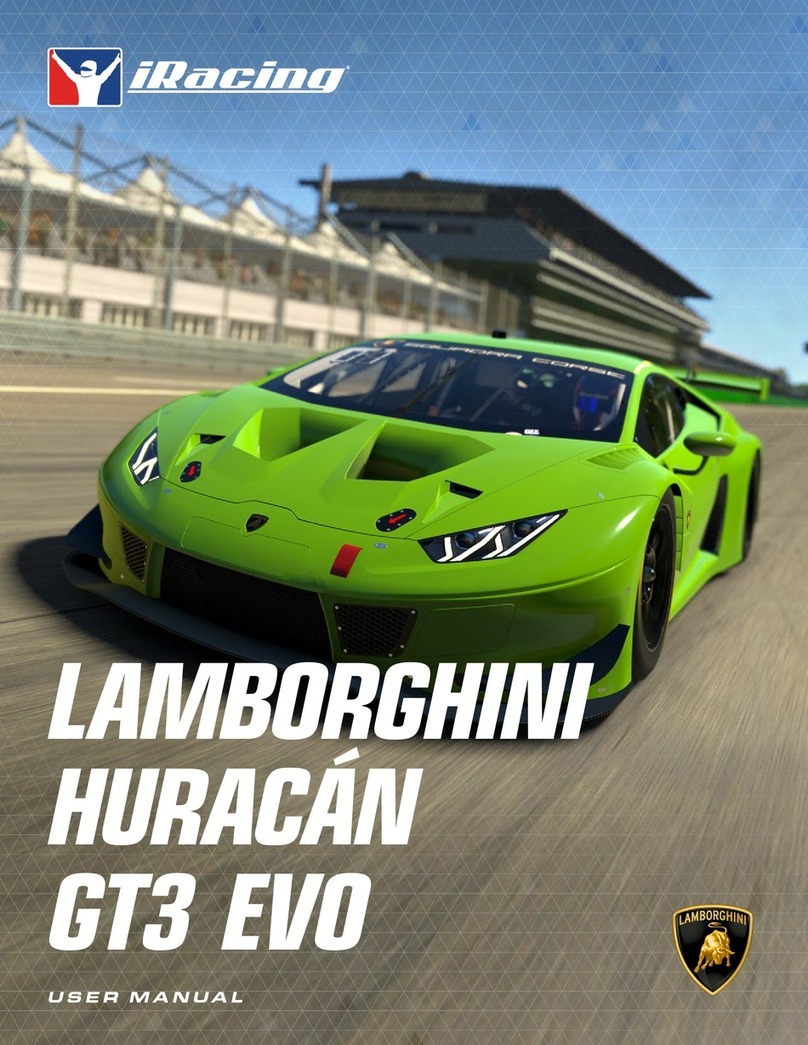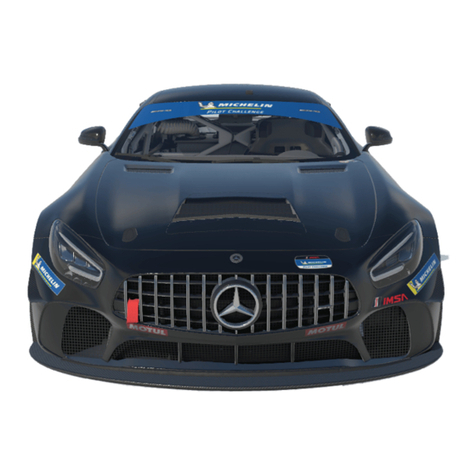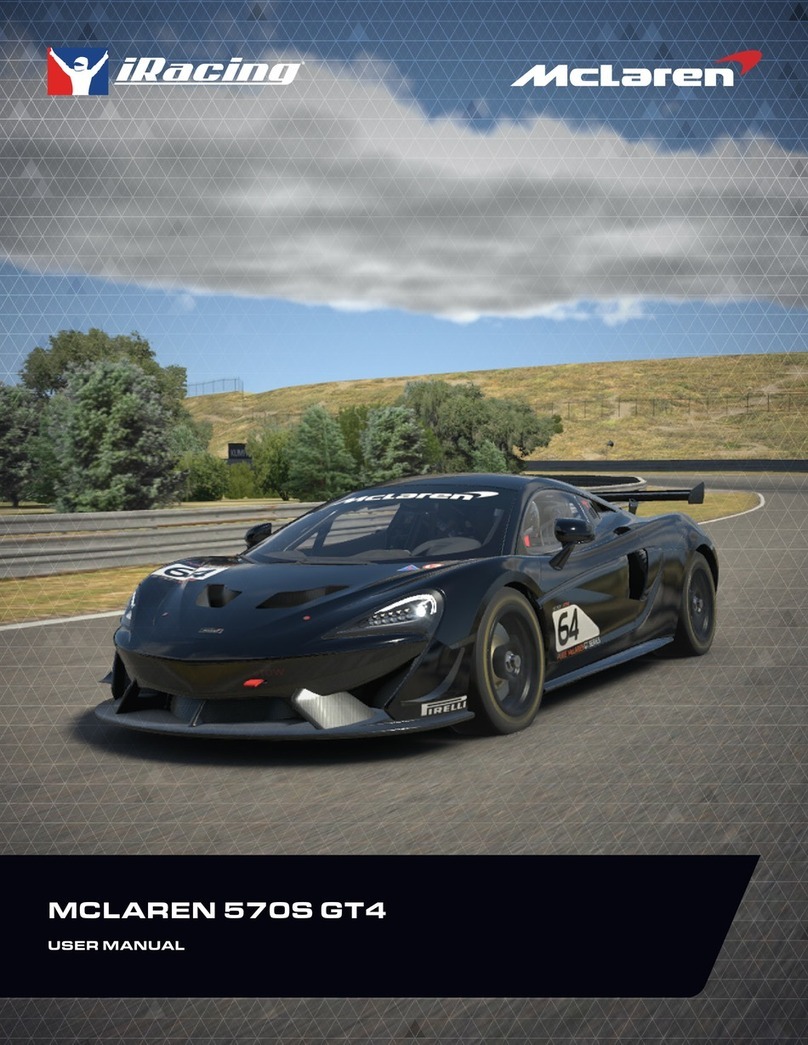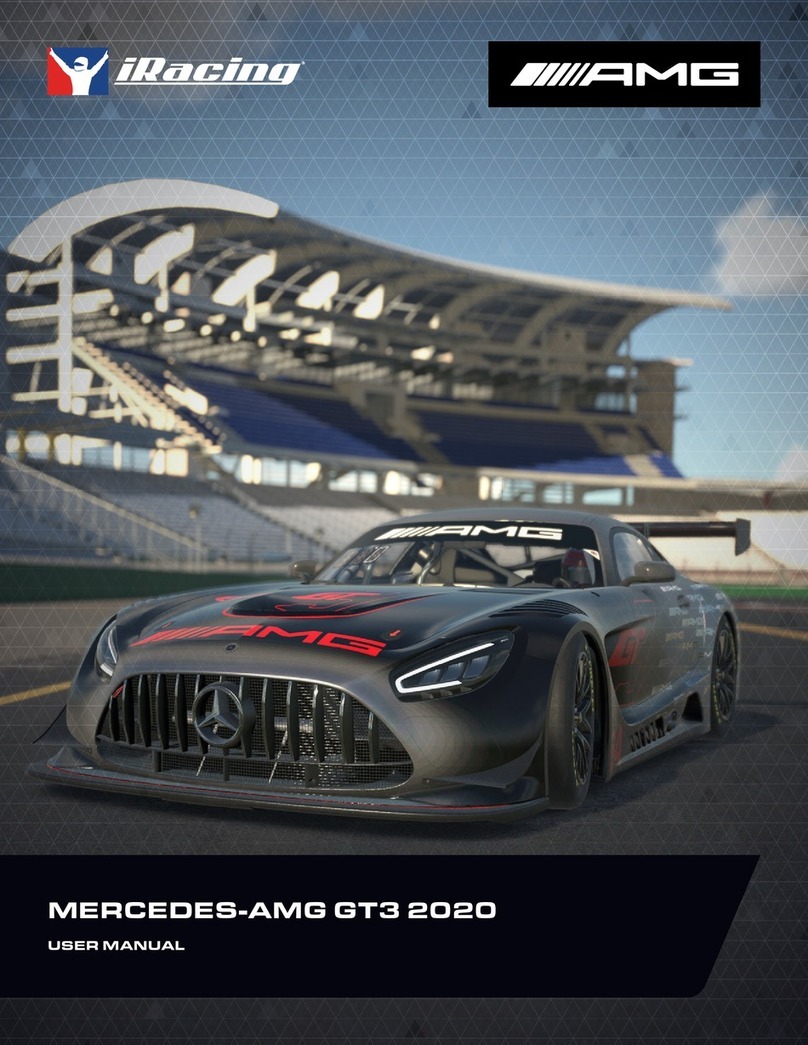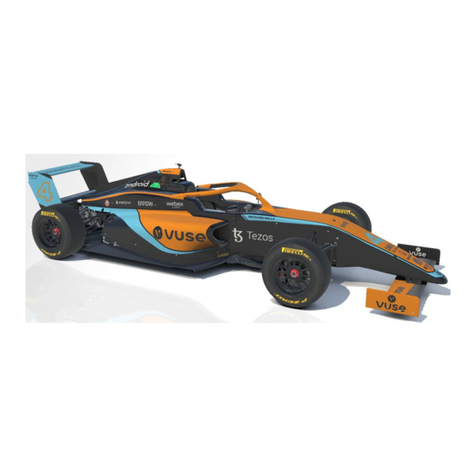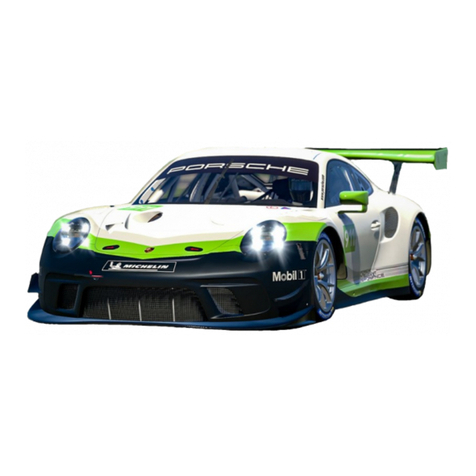
10DALLARA iR01 | USER MANUAL
DALLARA iR01 | ADVANCED SETUP OPTIONS | TIRES
TIRE SETTINGS (ALL FOUR TIRES)
COLD AIR PRESSURE
Air pressure in the tire when the car is loaded into the world. Higher pressures will reduce rolling drag and heat buildup, but will
decrease grip. Lower pressures will increase rolling drag and heat buildup, but will increase grip. Higher speeds and loads will
require higher pressures, while lower speeds and loads will see better performance from lower pressures. Cold pressures should
be set to track characteristics for optimum performance. The tire pressures will flash on the display until they reach 21 psi. At
this point the tires build heat slower as they “settle in” for the long run.
HOT AIR PRESSURE
Air pressure in the tire after the car has returned to the pits. The difference between Cold and Hot pressures can be used to
identify how the car is progressing through a run in terms of balance, with heavier-loaded tires seeing a larger difference between
Cold and Hot pressures. Ideally, tires that are worked in a similar way should build pressure at the same rate to prevent a
change in handling balance over the life of the tire, so Cold pressures should be adjusted to ensure that similar tires are at similar
pressures once up to operating temperature.
TIRE TEMPERATURES
Tire carcass temperatures, measured via Pyrometer, once the car has returned from the pits. Wheel Loads and the amount
of work a tire is doing on-track is reflected in the tire’s temperature, and these values can be used to analyze the car’s
handling balance. Center temperatures are useful for directly comparing the work done by each tire, while the Inner and Outer
temperatures are useful for analyzing the wheel alignment while on track. These values are measured in three zones across the
tread of the tire.
TREAD REMAINING
The amount of tread remaining on the tire once the car has returned from the pits. Tire wear is very helpful in identifying
any possible issues with alignment, such as one side of the tire wearing excessively, and can be used in conjunction with tire
temperatures to analyze the car’s handling balance. These values are measured in three zones across the tread of the tire.
